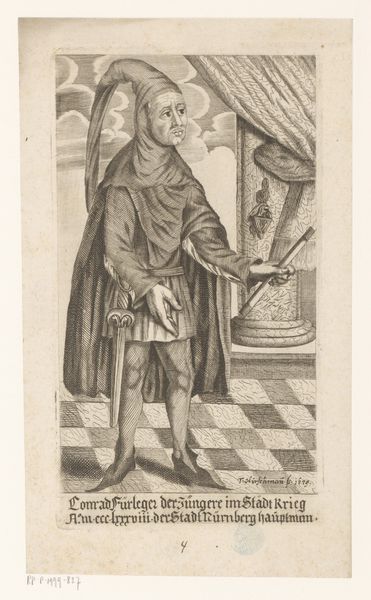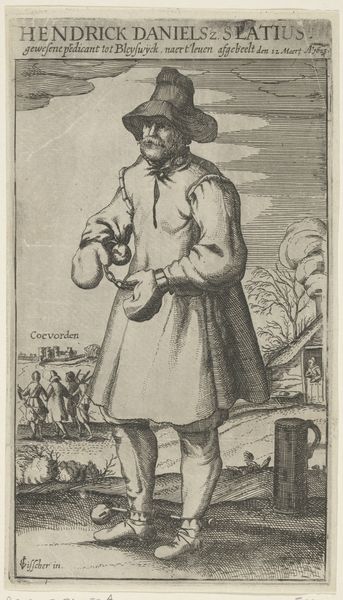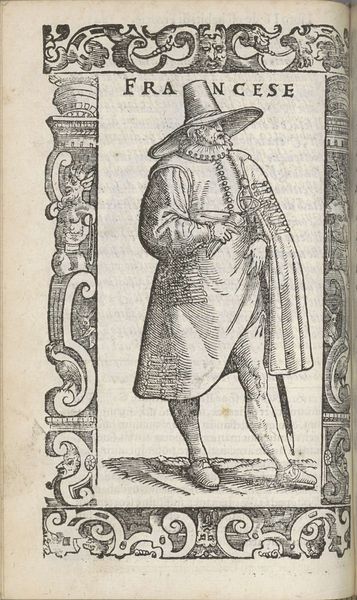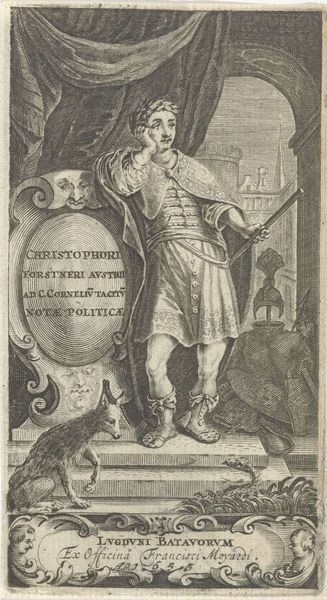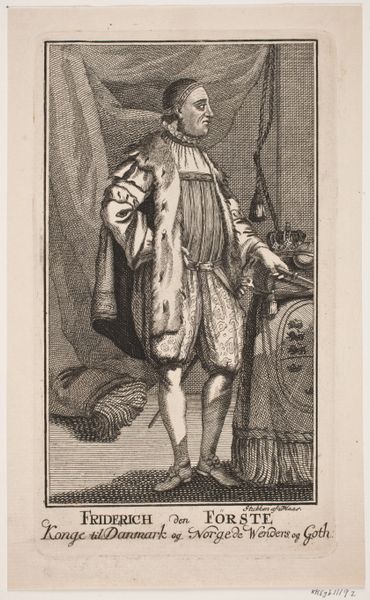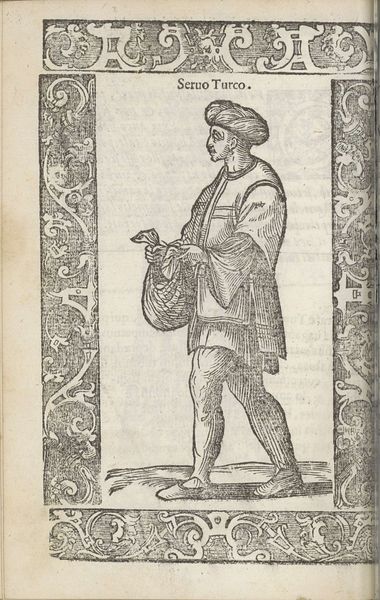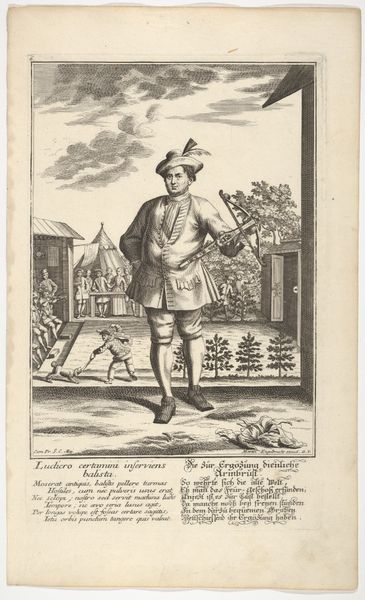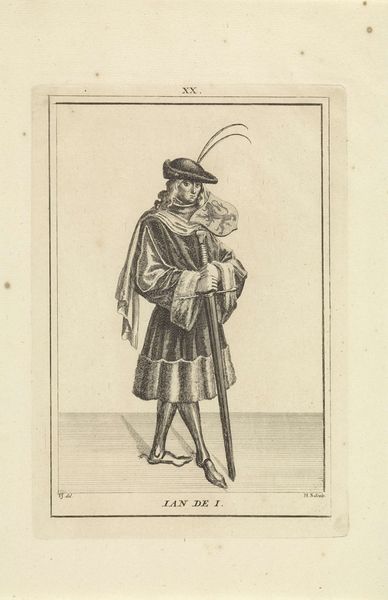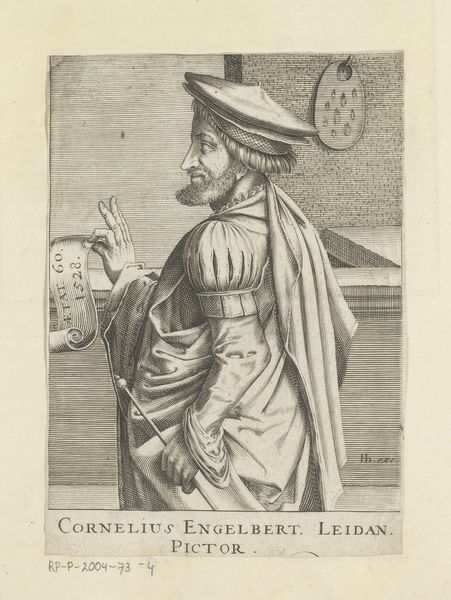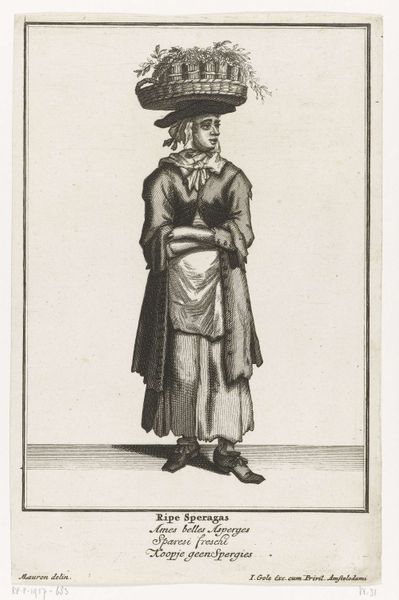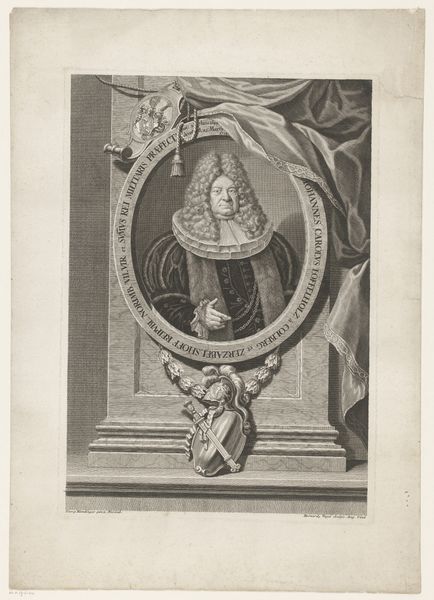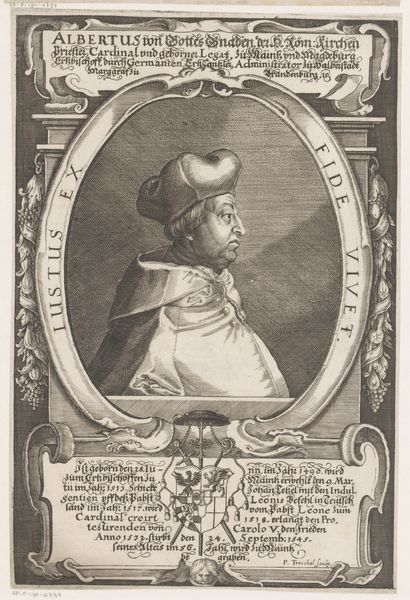
engraving
#
portrait
#
medieval
#
old engraving style
#
figuration
#
form
#
11_renaissance
#
history-painting
#
engraving
Dimensions: height 228 mm, width 163 mm, height 339 mm, width 250 mm
Copyright: Rijks Museum: Open Domain
Curator: This engraving, "Portret van Jan I van Holland," dating to before 1725, depicts Jan the First, Count of Holland. What stands out to you upon seeing it? Editor: Immediately, it's the linearity—the meticulous rendering of texture through those fine lines. The cloak’s fur trim and even the way light catches the armor in the bordering design—the engraver clearly revels in detail. Curator: The engraving showcases not only the Count himself, but also embeds him within symbols of governance and authority, and reflects ideas about powerful historical figures. Note the border, filled with martial emblems. These weren't mere decoration; they served to reinforce the subject’s status. Editor: I am fascinated by the composition. Jan I stands centered but his gaze lowers which subverts any attempt to suggest absolute authority, even while holding a sizable sword. How intentional are we reading his stooped shoulders? Is that an acknowledgement of something about the man himself or simply an artifact of style at the time of the engraving's creation? Curator: Engravings of this sort had a vital role. Before widespread photography, printed portraits disseminated likenesses of important figures, and in so doing, solidified power. Jan I had died long before this print was made. So, this image isn't necessarily meant to be representational. It reminds viewers of a historical legacy, connecting the present with the past and also alluding to political circumstances from when it was made. Editor: You can certainly sense how prints served as vehicles for visual messaging during this time. I find that the decorative setting which includes ominous symbols such as the skull also communicates meaning, reminding viewers of a world where ideas about living a virtuous life were highly prized. The skill in rendering light is, admittedly, excellent. It’s as though we have a graphic play—black ink upon the stark white, like a staged performance of chiaroscuro that pulls our gaze inward. Curator: Indeed. By examining prints such as this one, we start to perceive not only artistic but social functions. Works on display in institutions, collected, and exhibited send us very specific ideas. Editor: Precisely, we gain insight by considering the formal language the artist employed when choosing his materials. It is that artistic choice which grants insight and helps us analyze culture.
Comments
No comments
Be the first to comment and join the conversation on the ultimate creative platform.
